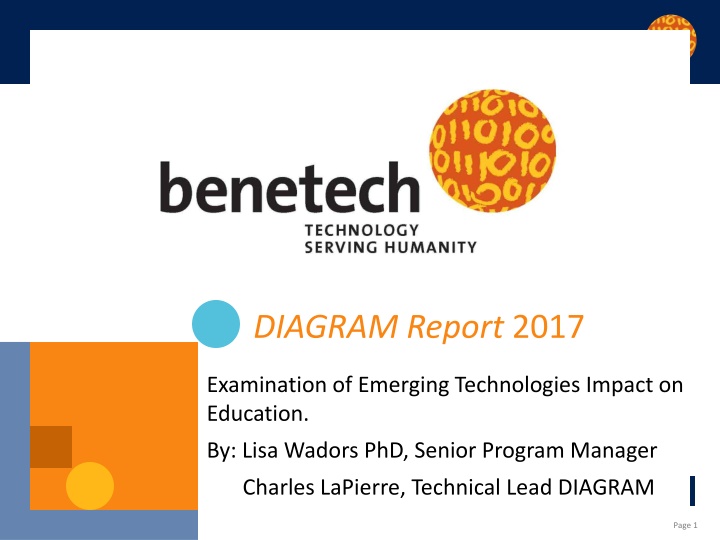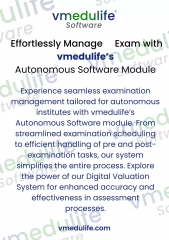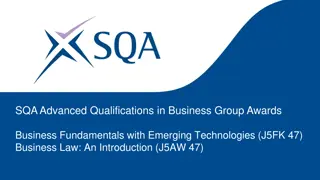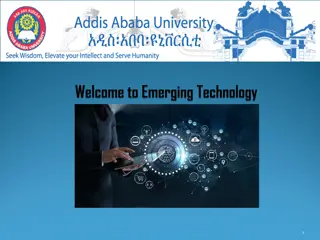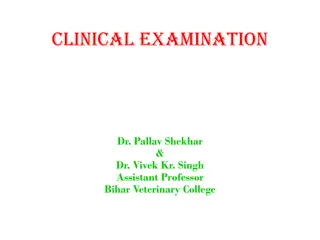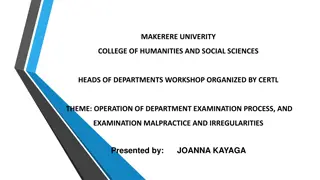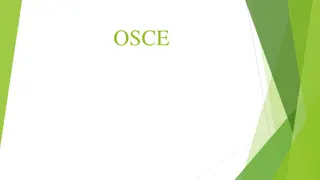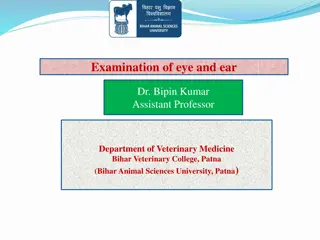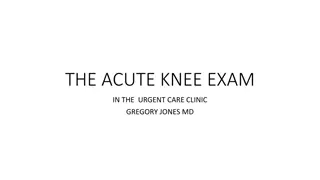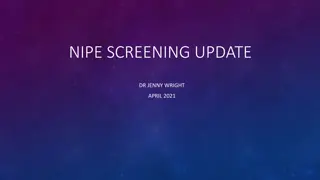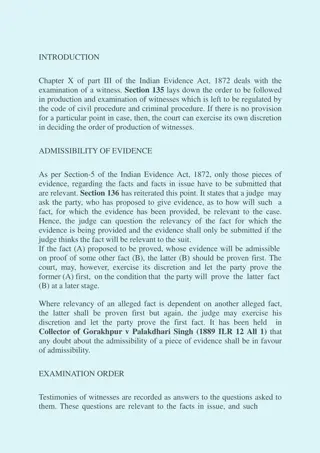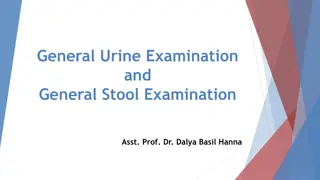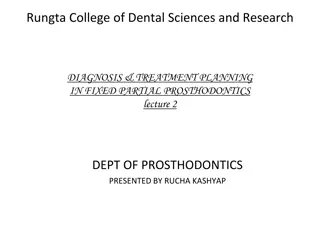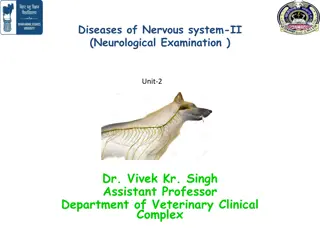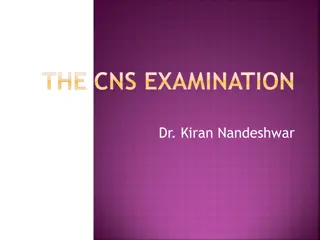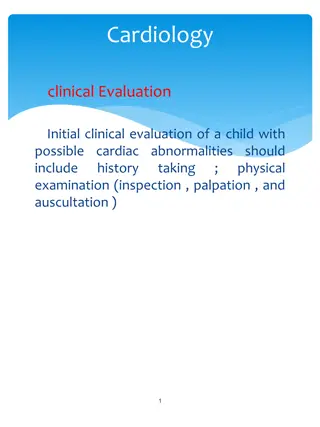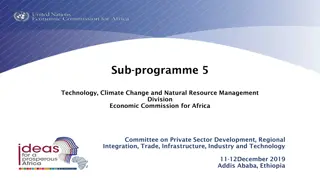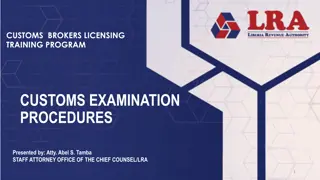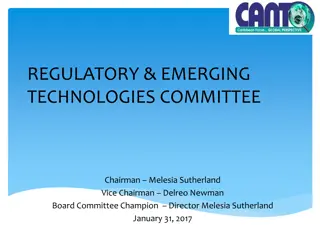2017 Emerging Technologies Impact on Education Examination
This report delves into the impact of emerging technologies on education, focusing on accessibility for students with disabilities. It explores key technologies, research methods, and areas of potential contribution within the educational landscape.
Download Presentation

Please find below an Image/Link to download the presentation.
The content on the website is provided AS IS for your information and personal use only. It may not be sold, licensed, or shared on other websites without obtaining consent from the author.If you encounter any issues during the download, it is possible that the publisher has removed the file from their server.
You are allowed to download the files provided on this website for personal or commercial use, subject to the condition that they are used lawfully. All files are the property of their respective owners.
The content on the website is provided AS IS for your information and personal use only. It may not be sold, licensed, or shared on other websites without obtaining consent from the author.
E N D
Presentation Transcript
DIAGRAM Report 2017 Examination of Emerging Technologies Impact on Education. By: Lisa Wadors PhD, Senior Program Manager Charles LaPierre, Technical Lead DIAGRAM Page 1
Introduction Thank you for joining us today DIAGRAM Center is funded by the US Department of Education Office of Special Education Goals for this award: Increased number of new educational materials that are born accessible and readily available to children and students with disabilities Increased use of new tools and technologies to create accessible education materials, especially STEM content, for children and students with disabilities Increased knowledge of the accessibility features specific to the needs of students with print disabilities and students with disabilities not traditionally associated with print disabilities A community of technology developers, publishers, and end users building knowledge and contributing to the development of tools/services. Page 2
Agenda Rational for the report Introduction and explanation of selected topics Where to find the report What is next Questions Page 3
Why did we do this? DIAGRAM Center Award 2015-2020 Looking at technology for students beyond traditional print disabilities Inaugural Edition Investigation of key technologies impacting education now and in the future Page 4
How did we go about this? Inquired input from our GAC / TASC and our working groups for potential topics which resulted in 20 possible areas of interest. Sent out a survey to our DIAGRAM community asking: How much impact do you think these technologies will have in education over the next 5 years? None at all, Some, Not sure, High impact, World Changing What technologies would you be able to contribute to our research We also stated in the survey that we will focus on identifying areas of enormous opportunity for students with disabilities and different learning needs. Page 5
How did we go about this? We received 26 submissions ranging from students, teachers, professionals and accessibility experts Narrowed to 6 topics based the feedback received Divided the researched (3 Lisa / 3 myself) Lisa and I conducted our own research Engaged with experts for their guidance and expertise in these areas Wrote each area then reached out again to select experts for their final comments and review Final editing and converting these separate chapters into an accessible web based report Page 6
Topics Covered Accessible Coding in Education (84% World Changing) Machine Learning (72% World Changing) Multimedia Interactives (High # of disabilities) Multimodal User Interactions (high # experts, and disabilities) Personalized Learning (High # of disabilities) Speech Recognition (69% World Changing) Page 7
Accessible Coding in Education What is it? Coding is the art and science of making a computer do what we want it to do. Programmers code using special computer languages to create a set of instructions that can be carried out by a machine in order to perform some specific task. Challenges Complicated developer environments Pictorial representation of algorithms Lack of Accessible Programming Environments Block-level Languages (UI/UX accessibility issues) Accessible collaboration tools Page 8
Accessible Coding in Education Opportunities The ability to code can level the playing field and allow all students equal access to post-secondary and future career opportunities Number of organizations and programs promoting accessible coding Deaf Kids Code AccessCSforAll & AccessComputing Funded by National Science Foundation DIAGRAM Center webinar, Computer Science for All Through Inclusive Design, Quorum Accessible Computer Language Outlier Research - University of Chicago on using Universal Design for Learning (UDL) for students with learning disabilities. (NSF funded): Called AccessCSP Page 9
Accessible Coding in Education Major Takeaways Computer science teachers need to incorporate accessible workflows, incorporate UDL and accessible tools into their classrooms Inclusion of people with disabilities in the creation of the software environments will result in a more accessible and easier to use programing environment for all students. Using an accessible programming environment and simplified computer language such as Quorum will engage, and ignite all students including those with disabilities. Students with disabilities can connect with mentors and professionals to learn about internships and other opportunities in computing fields from programs like AccessComputing. Page 10
Machine Learning What is it? The term machine learning is used to describe one kind of artificial intelligence (or AI) where a machine is able to learn and adapt through its own experience. Challenges Having a reliable data set for training the machines is by far the most difficult problem. Student privacy and data collection in order to train and monitoring during class are unanswered problems. Time to train the system may be significant and a deterrent to use. Virtual assistants using Speech recognition as the only input modality will be challenging with students with speech impediments or for students with cognitive issues with irregular speech patterns. Page 11
Machine Learning Opportunities Machine learning has the potential to be a game changer for education through the use of automatic image descriptions, speech recognition, personalized learning, smart search, and early detection of learning disabilities. Machine Learning will learn more about student behavior and may be able to accurately support and identify the need for more interventions earlier. Major Takeaways Proactive signing of Student Privacy Pledge Microsoft s Azure in Education success story could help to identify students at risk of dropping out of school More work needs to be done to make sure that the use of machine learning will benefit all students. Page 12
Multimedia Interactives What is it? Multimedia interactives are applications that allow the user to control, combine, and manipulate different types of media, such as text, sound, video, computer graphics, and animation (Encyclopedia Britannica, 2017). Challenges Accessibility of multimedia Both Input modalities and Output accessibility concerns (E.g. Audio / Video without fallbacks) Real-time feedback from a simulation Hardware limitations making accessible content inaccessible (EPUB & Reading System) Page 13
Multimedia Interactives Opportunities McGraw-Hill s Connect University of Colorado Boulder PhET Interactive Simulations Global Certified Accessible a Benetech Initiative to certify EPUB books as accessible Accessible Interactive Objects - Accessible Dynamics Scientific Graphics report sponsored by DIAGRAM TeachLivE, a virtual classroom designed to improve teacher practice and student learning. Page 14
Multimedia Interactives Major Takeaways Multimedia interactives help students learn by engaging multiple senses. Providing more than one media experience for a particular interactive can benefit students with disabilities. Material itself must be accessible, having alternative representations available System that is used to access the material must also be accessible Input modalities: mouse, keyboard, speech, Output: Visually scalable, Screen Reader, Braille, Page 15
Personalized Learning What is it? Personalized learning in not a new concept, especially in special education. Educause defines personalized learning as a highly focused learning path for each student Challenges Lack of familiarity with technology Lack of shared understanding about how to implement the strategies Lack of availability of appropriate content Lack of mechanisms to control content Lack of ability to control the display of the content Page 16
Personalized Learning Opportunities Availability of appropriate content - there are many organizations that are providing content that could be tailored to the needs of individual learners Mechanisms to control and exchange content personalized learning platforms can open up opportunities for both teachers and students to engage in the content. Display of the Content - the use of digital accessibility tools can help students with disabilities access information in the way that works best for them. Assuming the content was born accessible Page 17
Personalized Learning Major Takeaways Personalization of learning opportunities must consist of a combination and balance of the right technology or platform with a skilled educator and thoughtful course design. This includes effective course instruction, timely feedback, and individualized support for unique learning styles Not all tools with work for each learner Educators, parents and students need to be able to communicate their needs to provide the right services and supports. Page 18
Multimodal User Interactions What is it? Ability to interact with information using multiple sensory modalities, like sound and text. The advantage of multimodal interaction it that allows learners to use more of their senses at once when taking in information. Challenges Discoverability Unless the teacher knows where to look for accessible versions of this model, the student will likely go without Production Limited tools to create multimodal user experiences, which can also be costly as well. Page 19
Multimodal User Interactions Opportunities Imageshare by DIAGRAM Center repository will house a collection of 2D, 3D, alt-text, and described videos that have been vetted and confirmed accessible Georgia Tech Sonification lab Gallaudet University VL2 - Visual Literacy is a story app that helps to increase bilingual education. Users of the VL2 story app can alternate between American Sign Language and reading English. They can also view fingerspelling of the written words. Poet Training Module to help content creators describe images or help identify when an image should also have a tactile graphic representation Page 20
Multimodal User Interactions Major Takeaways - Because of things like Personalized Learning, we are at the beginning stages of offering multimodal opportunities for students with disabilities - Educators have more tools to provide increased learning opportunities. - But discovery is key Page 21
Speech Recognition What is it? Speech recognition is the process of converting human speech into a machine-readable format. We interact with their devices, such as phones and computers, through a variety of speech recognition mechanisms. The technology in this space is moving very quickly as more and more consumers use their voices to complete a variety of tasks, from sending text messages to ordering groceries. One-to-one instruction has shown to improve reading scores in fluency, comprehension, and word recognition (National Reading Panel, 2000). Page 22
Speech Recognition Challenges Complex software needs extensive training to respond to an individual s unique speech pattern and vocabulary. Programs have limitations to functionality. Barriers: Cost and Time Technology still struggles with the ability to capture words from people with accents, speech impediments, and languages other than English. Opportunities Speech recognition software can remove barriers that make the writing process difficult The use of speech recognition software speeds up the writing process and can help students with attention issues achieve their maximum potential. Diagnostic tool Page 23
Speech Recognition Major Takeaways This technology is evolving rapidly Google Has potential to support people with all kinds of abilities Becoming more mainstreamed Page 24
Summary This 2017 DIAGRAM Report is the first in an annual series. Each year, we will refresh the report to include the latest information about the top technologies you should continue monitoring and add new technologies that should be on your radar. DIAGRAM Report highlights new technologies being used in education that can be harnessed to create accessible and born accessible classrooms. We hope this DIAGRAM Report can start a conversation in your classroom, school district, home, or workplace that will open new opportunities for technology to better serve students with disabilities. Page 25
DIAGRAM Report - Link The DIAGRAM Report 2017 can be found at: http://diagramcenter.org/diagram-center-report.html Page 26
Next Steps Input from the community on what worked best what could be improved with the report Looking for input on what to keep looking at and update as these fields change Looking for input on maybe what areas we should focus less on. What we should add for next year Share our plan on how we will accomplish this Page 27
Q&A Questions? Page 28
Thank You Thanks to OSEP and our program officers Glinda Hill and Tara Courchaine Thanks to our DIAGRAM Community and those who participated in our survey and those who provided content and reviewed the report providing us with much needed feedback. Special thanks go to the following individuals for their additional expert review: Sina Bahram, Jesse Greenberg, George Kerscher, Mario Konecki, Raja Kushalnagar, Richard Ladner, Clayton Lewis, Derek Riemer, and Neil Soiffer. Page 29
Important Links Coding UDL Webinar, August 2017: https://recordings.join.me/xweLXucISES9etPBuh2nQQ Slides: https://docs.google.com/presentation/d/1njF9EW0kP8tJ8x3mibk hH15COcxfsxeKVY072Ukcv8w/edit#slide=id.g233f7aa8d8_0_0 http://outlier.uchicago.edu/accessCSP/ Multimedia Interactives https://phet.colorado.edu/en/accessibility Page 30
Important Links Multimodal User Interfaces http://sonify.psych.gatech.edu/research/sonification_sandbox/ Page 31
